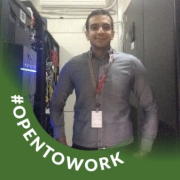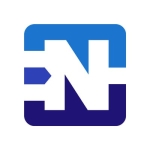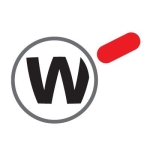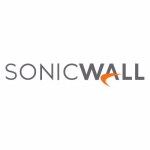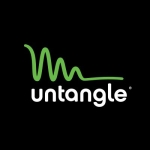What is our primary use case?
Typically, we use them on the internet edge for protecting customer networks from the internet. It's a delimiter between the local area network and the wider internet. Other use cases include securing data centers or protecting certain areas within a network. It's not particularly internet-based, but it gives you that added layer of security between networks or between VLANs and your network, rather than using a Layer 3 switch.
Ultimately, it's about securing data. Data is like your crown jewels and you need to be able to secure it from different user groups. Obviously, you need to protect your data from the internet and that's why we generally deploy Cisco ASAs.
How has it helped my organization?
The usability, with the GUI front end, certainly helps and it means you don't have to be a command-line person. We have to get away from that now because if you put the typical IT admin in front of a CLI they might struggle. Having something graphical, where they can click in logs to see what's going through the firewall— what's been denied, what's being allowed—very quickly, helps to get to a diagnosis or know something has been blocked. And when it comes to making changes within the environment, that can be done very quickly as well. I've seen something be blocked within a couple of minutes, and any IT admin can make a change through the GUI.
What is most valuable?
One of the most valuable features is the GUI front end, which is very easy to use. But I'm also a command-line guy, and being able to access the device via command-line for advanced troubleshooting is quite important.
What needs improvement?
One area that could be improved is its logging functionality. Your logs are usually displayed on the screen, but if you want to go back one or two days, then you need another solution in place because those logs are overwritten within minutes.
To have that kind of feature, it's more than likely there would need to be some kind of storage on the device, but those boxes were designed a number of years ago now. They weren't really designed to have that built-in. Having said that, if you do reflash into the FTD image, and you've got the Firepower Management Center to control those devices, then all that logging is kept within the Firepower Management Center.
For how long have I used the solution?
I've been using Cisco ASA Firewalls since they came out. Before ASA, I used Cisco PIX Firewalls. I've been using them since about 1999 or 2000.
I'm involved in the presale events as well as the implementation and post-sale support. We do everything. That is probably different from a lot of organizations. We are quite a small company, so we have to be involved at all levels. I see it from all angles.
How are customer service and support?
One of the reasons I've stuck with Cisco all these years is that you always get excellent support. If a network goes down due to major issues, I know I can raise a case with TAC and get through to subject matter experts very quickly.
Obviously, you need a SMARTnet contract. That means if a device has completely failed, you can get a box replaced according to the SLAs of that contract. That's very important for customers because if you have an internet edge failure and you just have a single device, you want to know that the replacement box is going to be onsite within four hours.
When a network goes down, you're going to know about it. You want to be safe in the knowledge that someone is going to be there for you and have your back. Cisco do have your back on those kinds of things.
Cisco support is a major selling point.
How would you rate customer service and support?
How was the initial setup?
In terms of deployment, a lot of organizations are moving to the cloud. People are looking at the ASAv image for deploying into the public cloud on Azure or AWS. But there are still a lot of organizations that use ASAs as their internet edge.
The on-prem and the cloud-based deployments are very similar. When you're designing a solution, you need to look at the customer's business requirements and what business outcomes they actually want from a solution. From there, you develop architecture. Then it's a matter of selecting the right kinds of kits to go into the architecture to deliver those business outcomes. We talk to customers to understand what they want and what they're trying to achieve, and we'll then develop a solution to hopefully exceed their requirements.
Once we've gotten that far, we're down to creating a low-level design and fitting the components that we're going to deploy into that design, including the ASA firewalls and the switches, et cetera. We then deploy it for the customer.
What was our ROI?
Your investments are protected because of the innovations over time and the fact that you're able to migrate to the latest and greatest technology, through Cisco.
There are also a lot of Cisco ASA skills out there in the marketplace, so if you have ASAs deployed and you get a new employee, it's more than likely they have had experience with ASAs and that means you're not having to retrain people.
Which other solutions did I evaluate?
We do deploy other manufacturers' equipment as well, but if I were to deploy a solution with firewalling, my number-one choice would probably be Cisco ASA or the FTD image or Cisco Meraki MX.
The flexibility you have in a Cisco ASA solution is generally much greater than that of others in the marketplace.
For any Cisco environment, we choose Cisco because it comes down to support. If the network is Cisco, then you have one throat to choke. If there is a network issue, there's no way that Cisco can say, "It's the HP switch you've got down in the access layer."
What other advice do I have?
ASA morphed from being just a traditional firewall, when they introduced the Firepower Next-Generation Firewall side. There has also been progress because you can reflash your old ASAs and turn them into an FTD (Firepower Threat Defense) solution. So you've got everything from your traditional ASA to an ASA with Firepower.
Cisco ASA has been improved over time, from what it was originally to what it is now. Your investments are being protected by Cisco because it has moved from a traditional firewall through to being a next-gen firewall. I'm a fan of ASA.
I think ASAs are coming towards the end of their lifespan and will be replaced by the FTDs. It's only a matter of time. But there are still a lot of Cisco customers who use ASAs, so migrating that same level of knowledge those customers have of the ASA platform across to the FPR/FTD image, will be a challenge and will require investment.
Disclosure: My company has a business relationship with this vendor other than being a customer: Partner/reseller






